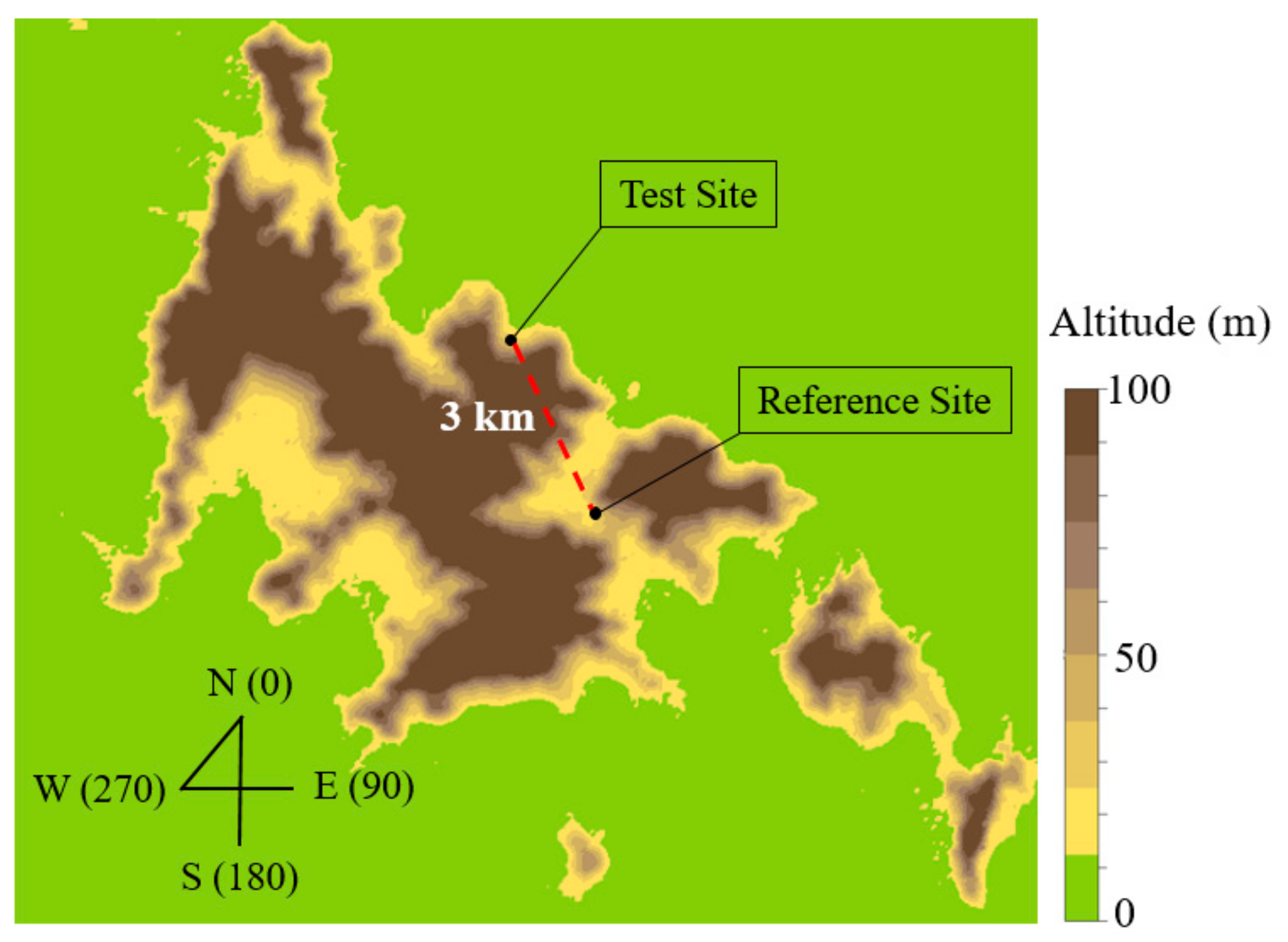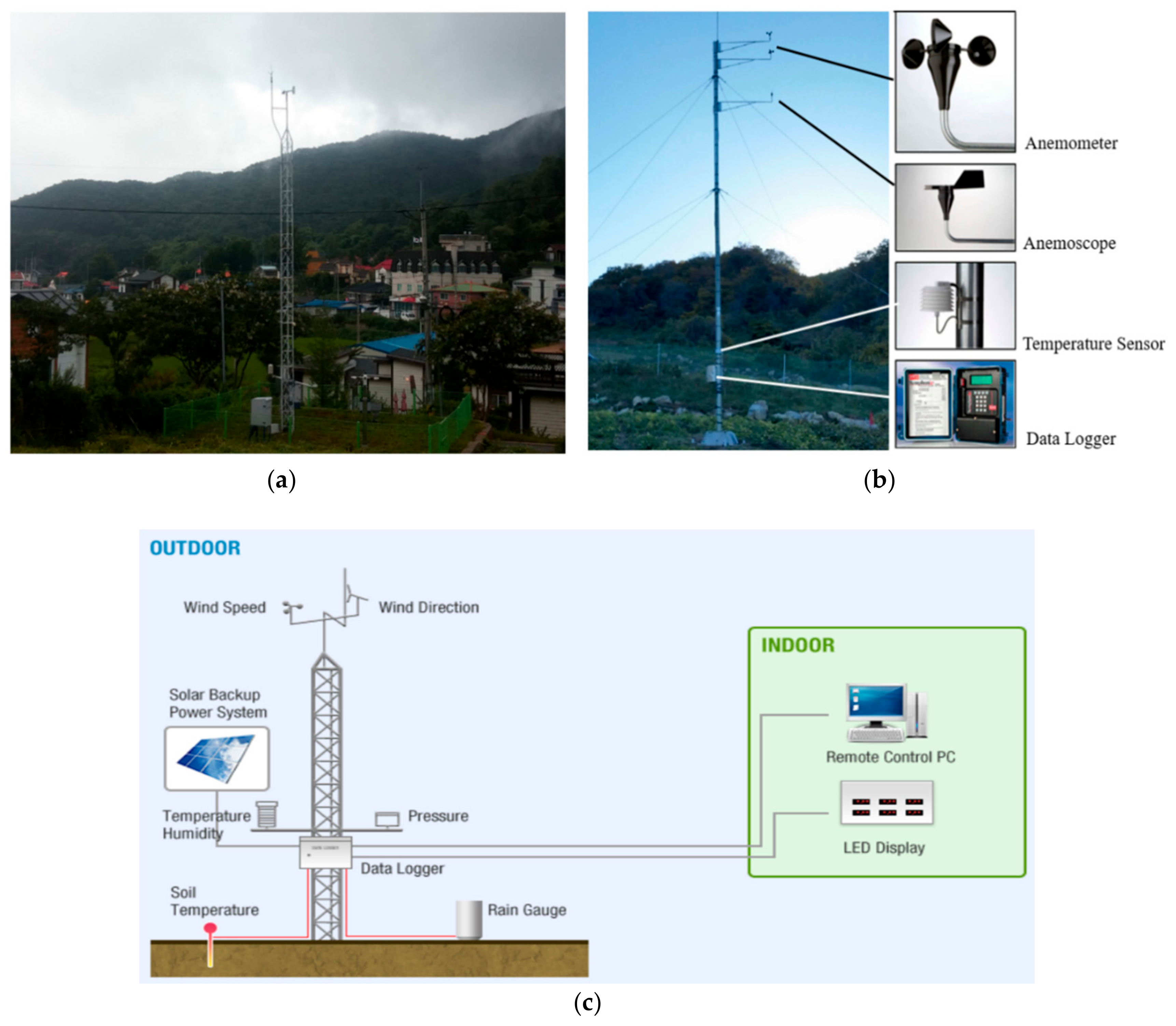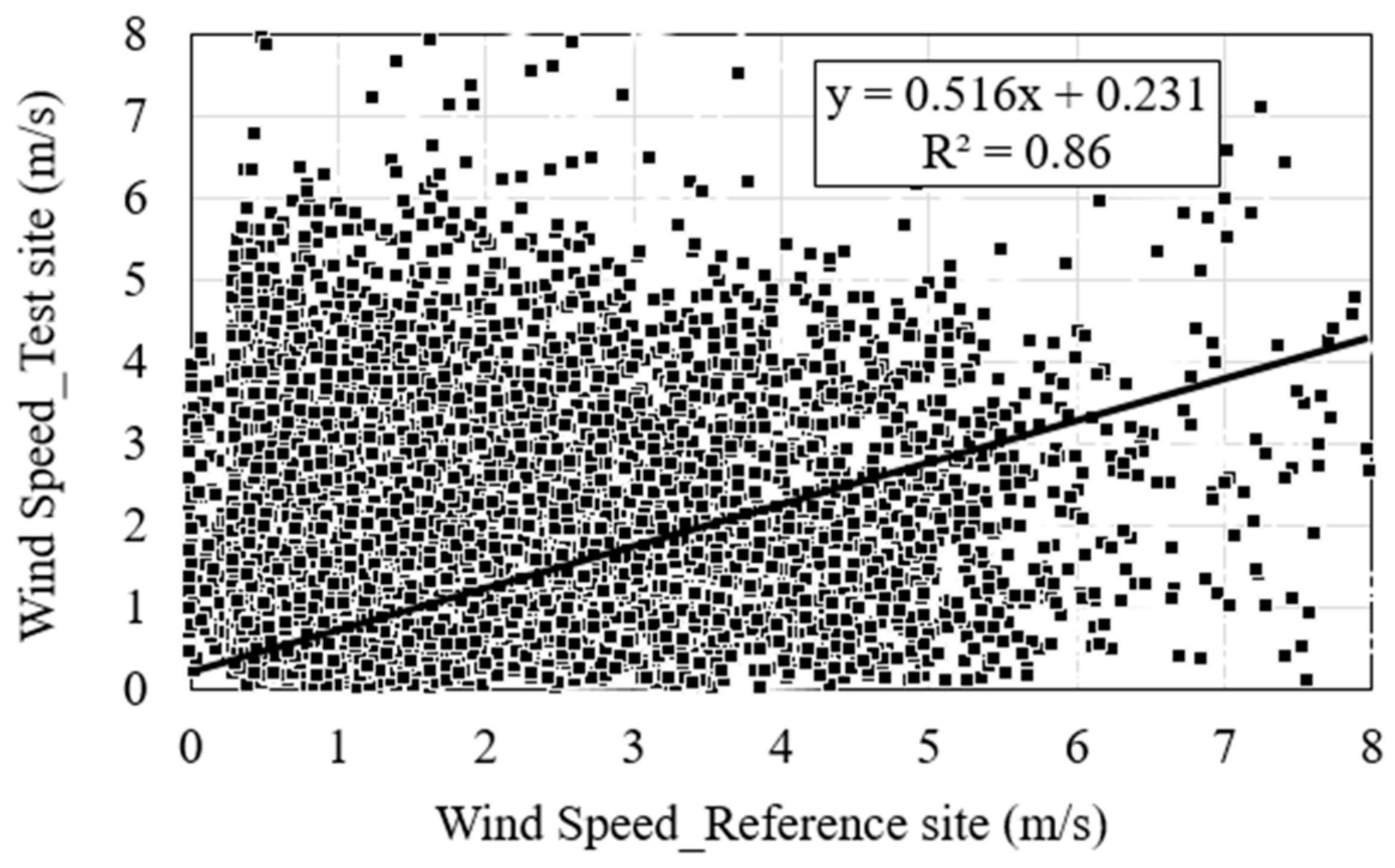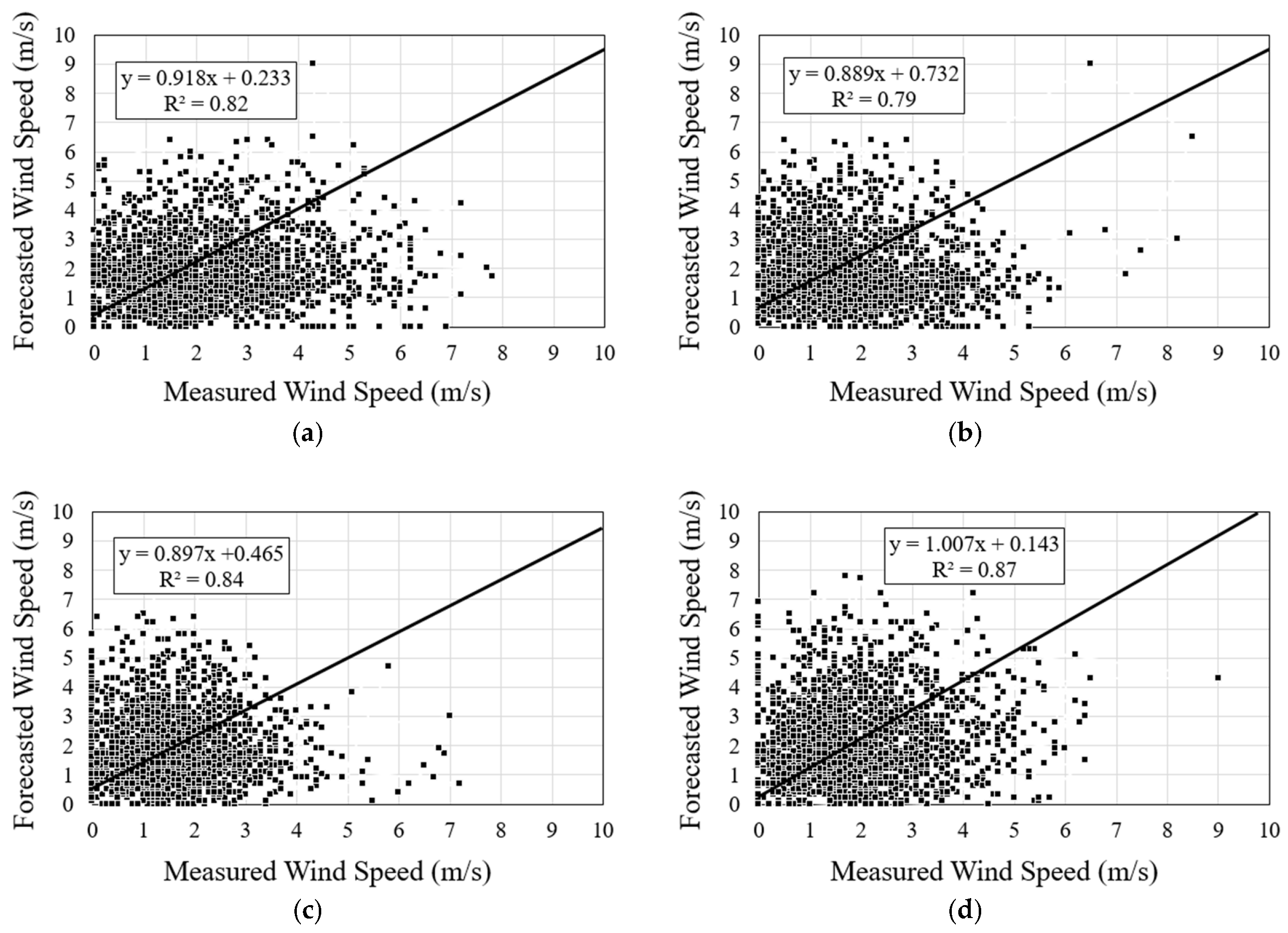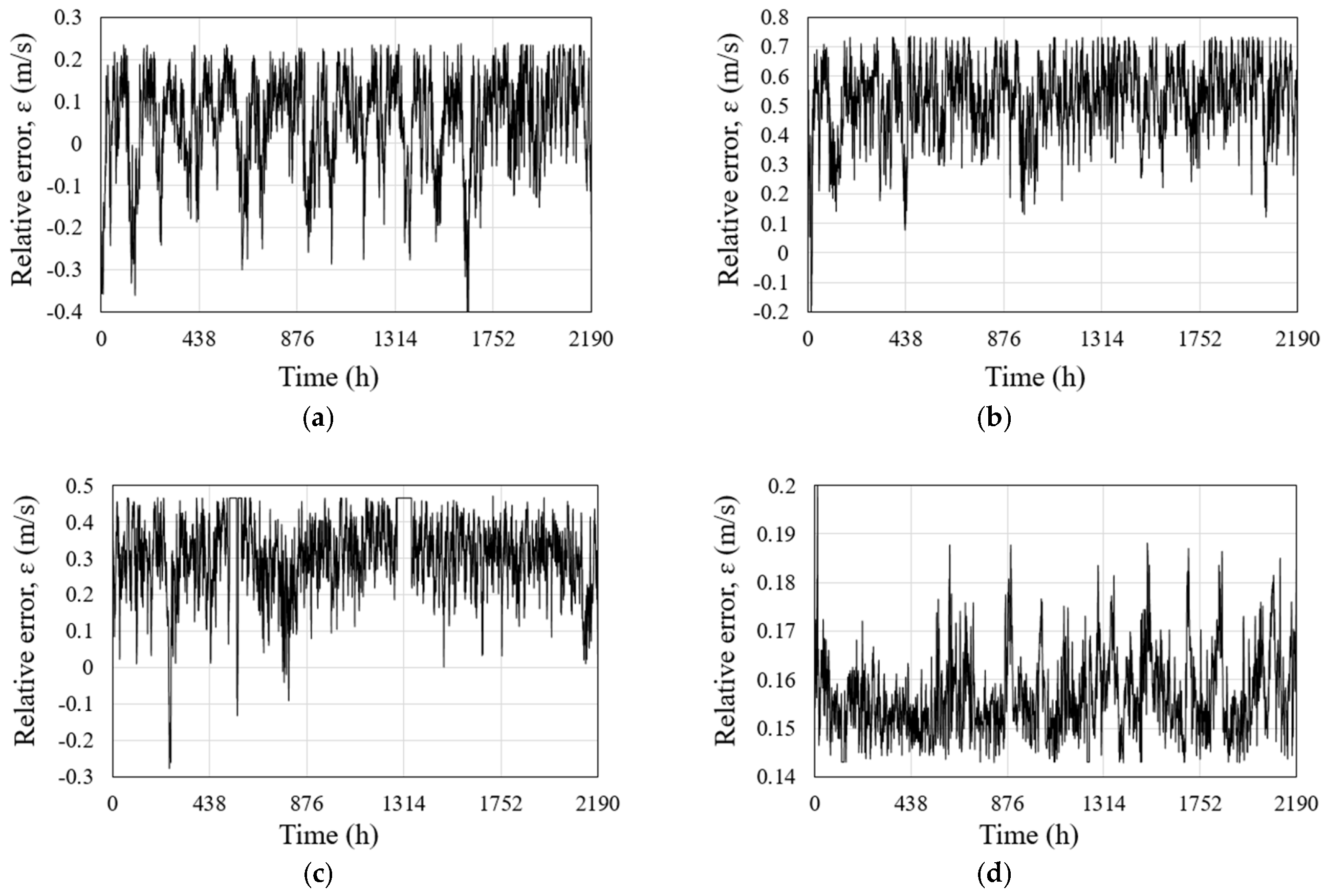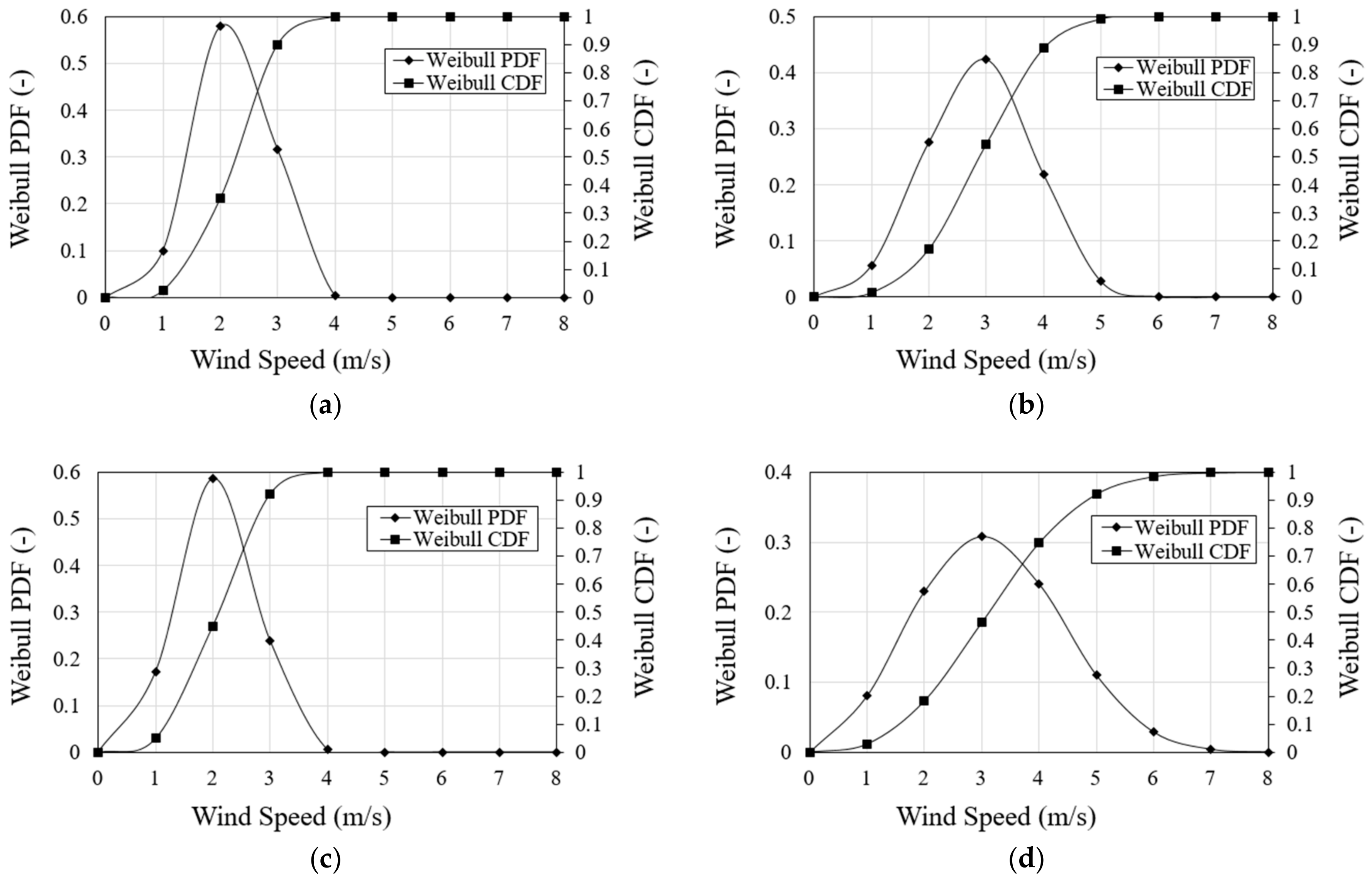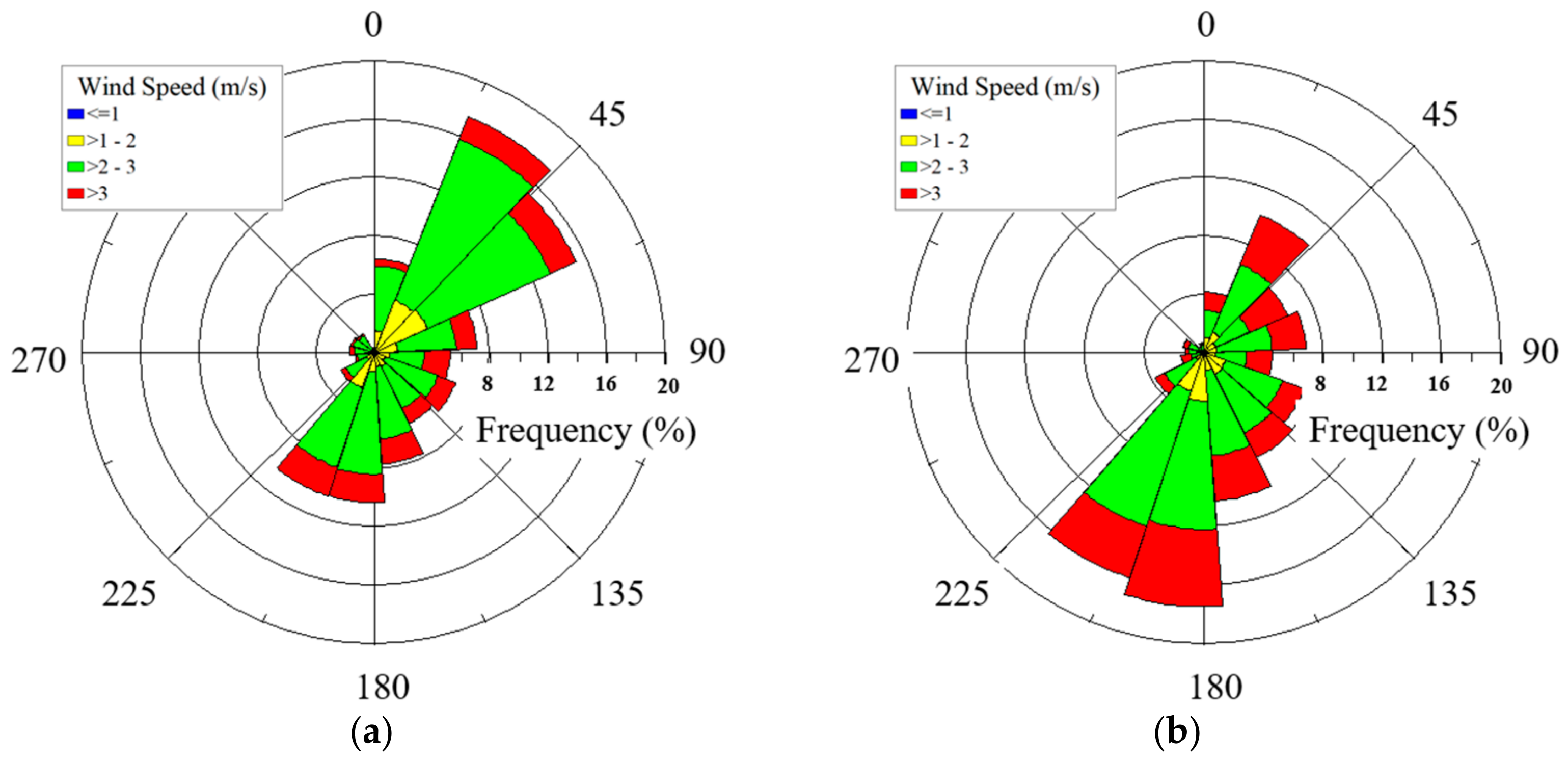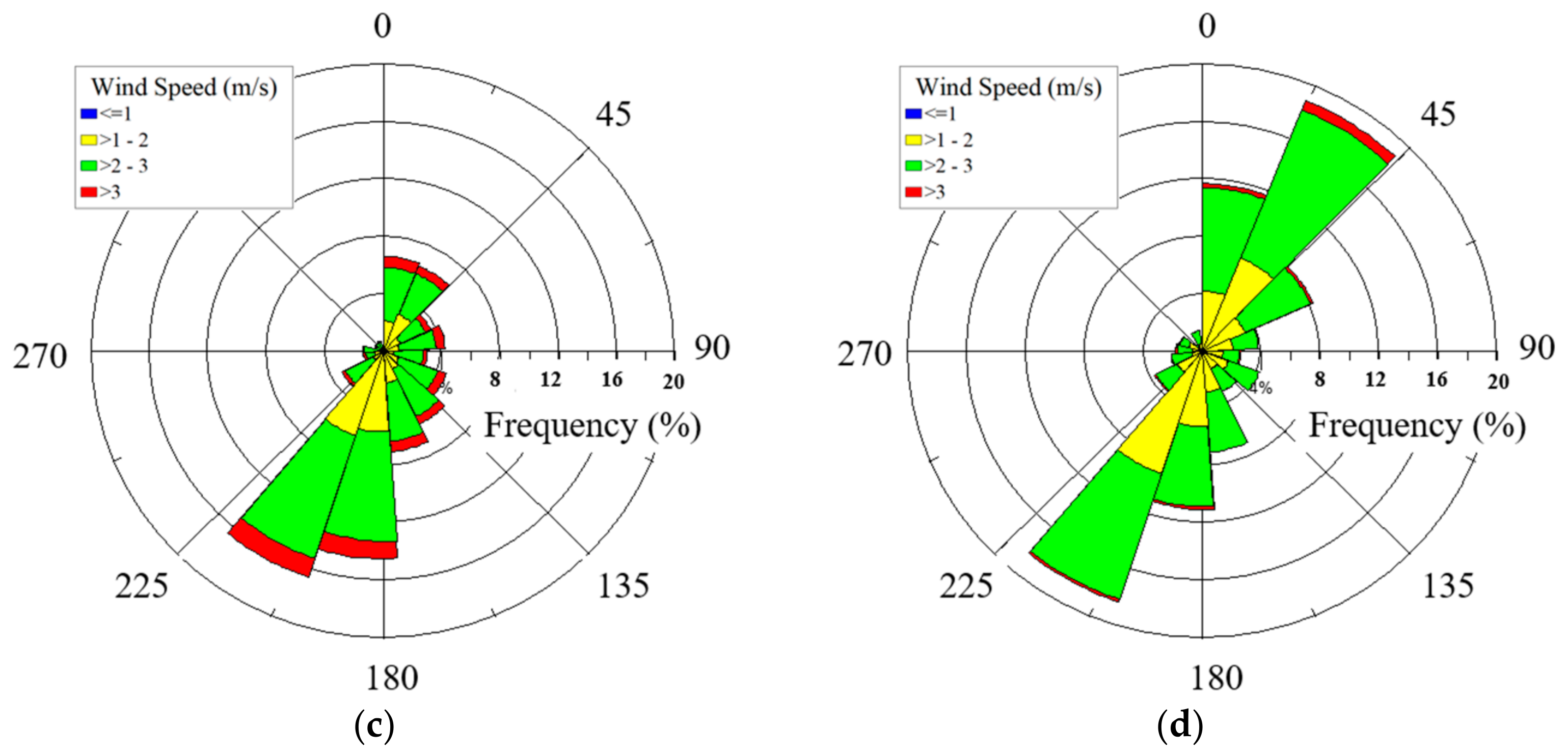1. Introduction
Wind energy is one of the cleanest sources for electricity production in terms of greenhouse gas (GHG) emissions. The development of new wind farms, both on-shore and off-shore, has increased rapidly over the last two decades [
1]. Wind farm development is a complex process that requires a great deal of experience, analysis, and pre-feasibility studies of the selected site. Wind farm developers usually require long-term measured wind data in order to design and plan wind farms at a particular site. However, the non-availability of long-term “good quality” measured wind data hinders this process [
2]. It is both impractical and nearly impossible to obtain measured long-term wind data at every planned wind farm site [
3]. Many researchers have pointed out that short-term wind data sets are insufficient to predict the behavior of wind over the entire life span of a wind farm (usually 20 years) [
4,
5,
6]. One way to address this challenge is to use computer-simulated wind data for the planned wind farm sites [
5]. However, there are major issues with the availability and accuracy of such wind data. So, in this scenario, measure-correlate-predict (MCP) methods could be an alternative technique to predict long-term wind data at a planned wind farm site, where measured wind data sets are available only for a year or so [
6].
In the past, it has always been a great debate to determine better techniques for wind resource forecasting. There were two popular approaches, the statistical (MCP) and the physical such as wind atlas analysis and application program (WAsP). Addison et al. [
7] stated that the MCP techniques are usually more accurate and robust than the other physical modeling algorithms (WAsP [
8,
9]), especially in complicated terrain. Physical techniques induce uncertainties in the forecasted wind data during the prediction process. For these reasons, MCP models have been extensively applied in software applications to predict long-term wind data, and have become a standard tool for wind farm site selection. Derrick et al. [
10] reported that most of the wind farm developers in 1996 used some sort of MCP method to forecast long-term wind data at test sites. The aim of the study conducted by Landberg and Mortensen [
11] was to shed some light on the debate of which technique is better for predicting long-term wind data—the physical approach (e.g., WAsP) or the statistical approach (e.g., MCP). The authors stated that both techniques can predict the wind resources up to a certain degree of accuracy, but MCP is more robust, as physical methods violate flow model assumptions. Bowen and Mortensen [
12] conducted a study to estimate the errors induced in the predicted wind data by WAsP due to site orography, and concluded that such errors can be significantly large. Brower [
13] stated that WAsP was unable to accurately predict the long-term wind resources in hilly areas in the US due to the complex topographical nature of the test sites. However, he also mentioned that WAsP can be used in relatively flatter and less-complex terrain areas. Similarly, Prasad and Bansal [
14] also stated that wind data predicted by WAsP in complex terrain can have a high amount of uncertainty. So, they concluded that it would be more feasible to utilize MCP methods while predicting wind data in complex terrains. They also concluded that uncertainty in the forecasted wind data by MCP methods could be considerably small, as the length of the time period for which measured wind data has been recorded at the test site increases. Due to the multiple advantages of MCP methods over physical methods, the current study utilized MCP algorithms.
This paper investigates the forecasting of long-term wind data at a test site (Urumsill on Deokjeok Island) in South Korea, where only two years (2015 and 2016) of measured wind data is available. The Korean Meteorological Administration (KMA) has constructed and installed a meteorological mast (met-mast) near Urumsill (approximate distance is 3 km), which has been recording weather data (including wind data) continuously since 2000. The wind data recorded by the KMA was used as reference data, and the total of the seventeen years (2000–2016) of data was selected for this purpose. Recently, S. Ali et al. [
15] presented a detailed statistical analysis of the wind data recorded by the KMA on Deokjeok Island.
It is very important to mention that the wind data measured at the test site in year 2016 was used as training wind data to develop MCP models. Similarly, measured wind data of year 2015 was used to estimate the accuracy in the predicted values using MCP algorithms (such data are referred to as test wind data). The wind data recorded at Urumsill and the met-mast were both measured at the height of 10 m with the same time interval (10 min). So, the met-mast data could be compared against the Urumsill wind data for the training year of 2016, and in this way, long-term wind data could be determined at Urumsill via MCP methods. The height of the anemometers at both sites is also very crucial in the MCP forecasting process, as Probst and Cárdenas [
16] concluded that the value of the correlation coefficient was higher between data sets when winds were measured at the same height, and vice versa for data sets collected at different heights. To the best of our knowledge, such studies had not been performed yet for this site or nearby areas. This paper not only forecasts the long-term wind data, but an estimation of wind potential will also be made at the test site. The authors believe that results presented here can be very useful for planning a wind farm development in the region.
4. Conclusions
The current study aimed to forecast and analyze the long-term wind data at a test site called “Urumsill” on Deokjeok Island, South Korea, at which only two years (2015 and 2016) of measured wind data were originally available. The reference wind data were recorded by a met-mast continuously since the year 2000, and that met-mast was located at a distance of 3 km from Urumsill. At the test site, measured wind data of 2016 were used as training data to build MCP models, whereas wind data of 2015 were used to measure the accuracy in the forecasted data (test data).
The measured wind data of both sites showed a similar pattern in wind speed and angle, over a concurrent time period of five days during all four seasons of the year 2016. When the measured wind data of both sites were compared against each other for the year 2016, the r-squared (R2) value was found to be 0.86. Similarly, on a monthly basis, the maximum value of CV was less than 0.712 and RV was found to be within [−1 to +4.676] range in the predicted wind data of the test year 2015. Measured and forecasted wind data at the test site were also compared against each other on a seasonal basis for the year 2015, and minimum R2 value was found to be 0.79 (spring) in this case, which can be considered as acceptable. Furthermore, the magnitude of maximum difference between the monthly mean wind speeds of both types of data (measured vs. forecasted) corresponded to a value of 0.541 m/s, and similarly, the values of some statistical error-indicating parameters (, , and MAE, bias error, etc.) were also within an admissible range (over 90% accuracy). Finally, it was found that the forecasted values of wind speed had maximum relative error in the range of 0.8 m/s for test year of 2015.
The Weibull shape (k) and scale (c) parameters were estimated for all the years (2000–2016) using five different methods according to the forecasted wind data. The empirical method was found to be the most suitable in this case, as it produced the lowest value of RMSE. Overall, the mean values of k and c were found to be 1.81 and 1.75 m/s, respectively. Most of the winds seemed to be in the range of 1 m/s to 3 m/s, and blew from either the north-east direction or the south-west direction.
